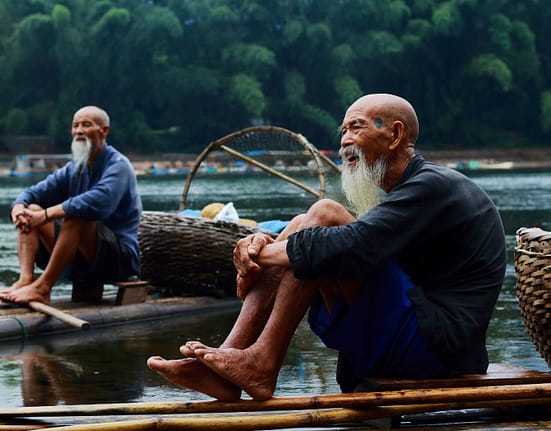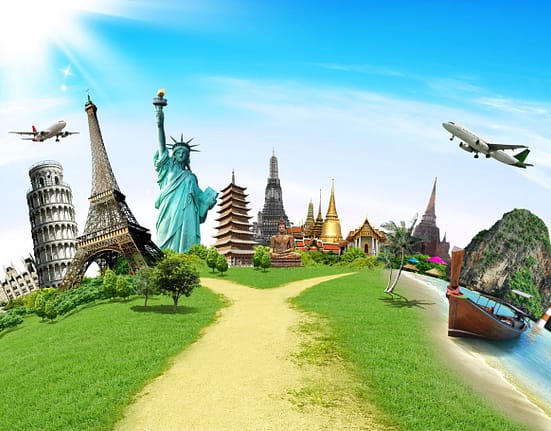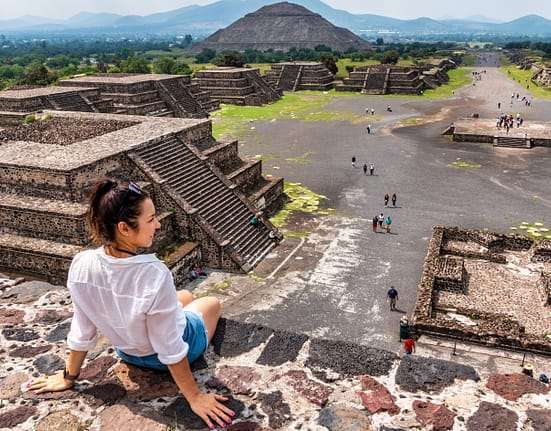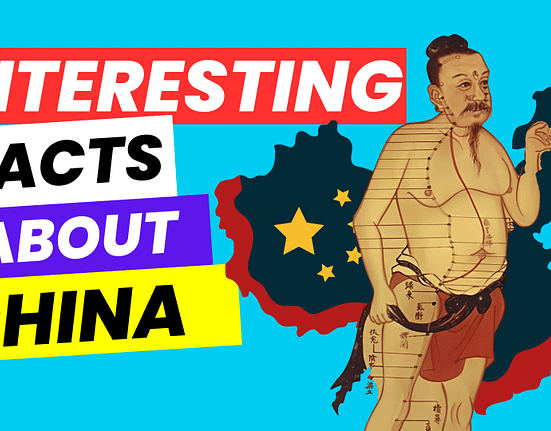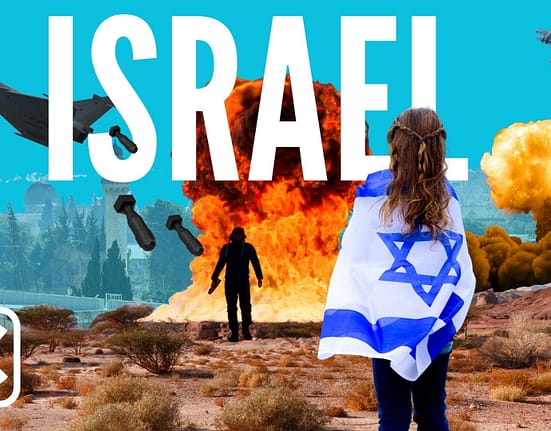Last updated on December 14th, 2023 at 05:11 pm
Hello, fellow fact-finders! Strap in, as we’re about to take a thrilling ride on the knowledge express to the Southeast Asian wonderland known as Cambodia! Picture this: a land teeming with ancient temples, dense green forests, and untouched beaches, all steeped in a rich history that’s as complex as it is captivating. From the regal Khmer Empire to the chilling era of the Khmer Rouge, Cambodia’s past is a riveting saga that has shaped its present.
Today, it’s not just an economic titan but also a haven of biodiversity, sheltering a staggering array of wildlife. Food lovers, brace yourselves for a gustatory adventure with Cambodian cuisine, an international darling for its eclectic ingredients and varied flavors.
Hey everyone, Welcome aboard another exciting post of Complete Facts Online.com. Today, we’ll be journeying through the fascinating country of Cambodia.
So folks, are you ready for an exciting journey packed with “43 Interesting and Amazing Facts about Cambodia”? Keep reading as we reveal the magical world of Cambodia in all its splendor!
So, Let the adventure and fact hunt begin!
Interesting Cambodia Facts You Need to Know about Cambodia
1. The Many Names of Cambodia: A Historical Rollercoaster
Often, a country’s name bears witness to its historical journey. For Cambodia, its monikers have been as mutable as its ruling powers. Kicking off as the Kingdom of Cambodia in 1953, this nation danced through five different identities, including The Khmer Republic and The People’s Republic of Kampuchea, before pirouetting back to its inaugural title. As we’ve unraveled since 1993, this name carousel seems to have finally come to a standstill.
2. Cambodia’s Youthful Demographics: A Sobering Reality
The average age of Cambodia’s population paints a poignant picture. With half of its populace under the tender age of 15, and a whopping 60% clocking in under thirty, it’s a country bustling with youthful energy and scant silver hair. This demographic skew, a chilling legacy of the Khmer Rouge’s reign of terror, stands as a stark reminder of the millions who fell prey to one of history’s most brutal genocides.
3. Angkor Wat: Cambodia’s Monumental Tribute to Spiritual Diversity
Cambodia, home to the world’s largest religious monument on earth, Angkor Wat, offers a captivating tableau of architectural brilliance and cultural evolution. Sprawling over 400 acres, this UNESCO World Heritage Site, built over three decades by Khmer King Suryavarman II, started its spiritual journey as a Hindu temple dedicated to Lord Vishnu. However, the tides of time transformed it into a Buddhist temple, now standing as a popular tourist attraction and an emblem of Cambodia’s cultural and architectural richness.
4. Angkor City: A Monolith of Epic Scale
The scale of Angkor Wat, forged from a staggering 5 to 10 million stone blocks weighing 1.5 tons each, is mind-boggling. But hold onto your hats, because the city of Angkor itself ups the ante. With its construction consuming more stone than all the Egyptian pyramids combined and its area surpassing modern-day Paris, this ancient metropolis showcases a testament to human ambition and architectural prowess that leaves visitors awestruck.
5. Celebrating Cambodian Independence: A Historic Milestone
Kicking off our Cambodian journey, let’s rewind to 1953 when Cambodia unfurled its independence from French colonial rule. This pivotal moment in the nation’s history is celebrated annually on November 9. Locals, in a spirit of patriotic fervor, throng the iconic Independence Monument in Phnom Penh, commemorating their country’s hard-won sovereignty and paying tribute to their past.
6. The Cambodian Flag: A Singular Design in a Sea of Sameness
Among the sea of similar national flags, Cambodia’s ensign stands as a distinctive beacon, audaciously featuring a building – the iconic Angkor Wat. This design breaks the mold of conventional flag patterns, setting Cambodia’s flag apart from over 200 others worldwide. This flag, the only one of its kind, echoes the spirit of an independent trailblazer who doesn’t seek the crowd’s approval but stands out unabashedly in his unique identity.
7. Birthday Nonchalance: An Unusual Cultural Norm in Cambodia
While most folks around the globe eagerly anticipate their birthdays, in the Kingdom of Cambodia, this personal milestone often passes by unnoticed. Both young and old pay little heed to their annual aging marker, a concept that might baffle those who eagerly count down to their special day. In fact, some Cambodians are so nonchalant about birthdays that they only recall the season of their birth, making this cultural quirk a truly distinctive aspect of the Cambodian way of life.
8. The High Price of Goodbyes: Cambodia’s Costly Funerals
In Cambodia, the cultural importance of funerals is reflected in their staggering costs. The average Cambodian funeral runs a hefty tab of around $9,000 – a daunting figure considering the average monthly income per person is less than $100. Families often pool their life savings and sell major possessions to foot this bill, underscoring the profound significance of funerals in Cambodian culture. This high price tag becomes slightly more fathomable when you consider that the funeral rituals can extend over a 49-day period.
9. Cambodia’s Dark Past: The Shadows of the Khmer Rouge Era
From 1975 to 1979, Cambodia was under the devastating rule of the Khmer Rouge and its notorious leader, Pol Pot. This grim chapter in Cambodia’s history witnessed the horrifying massacre of between 1.5 to 2 million people, many of whom met their end in the infamous Killing Fields. This mass extermination has indelibly scarred the nation and has resulted in a striking demographic statistic: 65% of Cambodia’s population is under 30, a sobering testament to the country’s harrowing past.
10. Khmer New Year: A Splashy Celebration
Khmer New Year offers a vibrant spectacle that extends over three days, culminating in a scene that might give any neatnik pause. The festivities reach their zenith on the final day with an astonishing deluge of water and the unexpected burst of talcum powder in the air. This cherished festival, enthusiastically attended by locals and increasingly popular among tourists, presents a unique blend of cultural tradition and high-spirited merriment that is truly a sight to behold.
11. Sacred and Profane: Navigating Cambodian Body Etiquette
Our cultural surroundings shape our perspectives, even extending to how we perceive our bodies. In Cambodia, this unique cultural lens renders the head as almost sacred, an area that should remain untouched, even in an affectionate context. Conversely, the sole of one’s foot holds a contrasting status and pointing it towards someone or something is viewed as a significant slight. These nuances in body etiquette, rooted in Cambodian tradition, offer intriguing insights into the country’s rich cultural tapestry.
12. Youthful Matrimony: A Cultural Norm in Cambodia
In Cambodia, the average age for marital union leans decidedly towards the youthful side, with men typically taking vows at 25 and women even earlier at 22. This early embrace of matrimony injects a poignant intensity into adolescent relationships and provides a fresh lens to view ephemeral holiday romances. This custom, markedly different from Western practices, offers an intriguing snapshot into the societal expectations and traditions of Cambodia.
13. Cambodian Weddings Are a Three-Day Affair!:
Traditional Cambodian weddings certainly redefine the term ‘celebration,’ stretching the festivities over a whopping three days, and yes, nights too! If you ever get an invitation, buckle up for an unforgettable experience, and perhaps a bit of a test for your liver. Marrying in Cambodia is not just about exchanging vows, it’s about indulging in an elaborate, culturally rich extravaganza that continues round-the-clock!
14. A Terrifying Legacy: Millions of Active Landmines Still Lurk in Cambodia:
It’s a chilling fact that Cambodia’s rural landscapes are still fraught with peril, harboring between 4 and 6 million active landmines. This lethal legacy of warfare serves as a stark reminder of the devastating impacts of conflict. Causing around 30 fatalities annually, these hidden hazards pose an ongoing risk, turning innocent countryside strolls into potential life-or-death situations.
15. Currency Conundrum: The Unusual Dual Monetary System of Cambodia
Cambodia presents a unique peculiarity in its monetary system, with the US dollar coexisting alongside the local currency, Riel. This unexpected occurrence is due to the Riel’s low and fluctuating value, leading to a staggering 90% dollarization in the nation. So, while you’ll be shelling out dollars for your purchases, anticipate receiving change in Riels – a topsy-turvy financial situation that surely keeps your math skills sharp!
16. Breaking the Mold: Cambodia’s Unexpected Utensil Usage:
Bucking the commonplace chopstick trend in Asia, Cambodia stands unique with its distinct dining etiquette. This Southeast Asian nation deviates from what we often associate with Asian culinary traditions, making it one of the few places in the region where chopsticks aren’t the main utensil. This intriguing aspect of Cambodian culture offers a refreshing contrast and adds another layer to the diverse tapestry of global dining customs.
17. Daredevil Driving: The Unconventional Traffic Norms of Cambodia:
Cambodia’s roadways are a peculiar spectacle, where traditional traffic laws seem to evaporate amidst the frenzied driving habits of locals. Surprisingly, this seemingly chaotic system works harmoniously, with an utter absence of road-rage. This unorthodox approach thrives on equality: everyone equally ignores traffic norms, leading to an unexpected balance. It’s an adrenaline rush that requires guts and a period of adjustment, but soon enough, you’ll be navigating these roads with the ease of a seasoned local!
18. A Culinary Delight: Cambodia’s Curry-Crowned National Dish:
Delve into the rich culinary landscape of Cambodia and you’ll encounter ‘Amok’ – a steam-cooked curry delicacy wrapped in banana leaves. Cambodia’s national dish, Amok, boasts a variety of flavors. Whether you’re a fan of fish, chicken, or tofu, there’s an Amok dish just for you. This gastronomic gem offers a delightful glimpse into Cambodia’s vibrant cuisine, and it’s certainly a must-try for any food enthusiast!
19. Nature’s Hidden Gems: Cambodia’s Sanctuary of Rare Creatures:
Embark on a journey into Cambodia’s natural wonderland, teeming with rare and precious wildlife. From the enigmatic Irrawaddy dolphin in the Mekong River to the fascinating Cantor’s Giant Softshell Turtle, the country is a wildlife enthusiast’s dream. The Cardamom Mountains and Tonle Sap lake further enrich this biodiversity with unique flora and exotic marine life. Intriguingly, much of Cambodia’s wilderness remains under-studied, hinting at undiscovered species waiting to be found.
20. Tonle Sap Lake: Cambodia’s Shape-Shifting Natural Marvel:
Cambodia’s Tonle Sap Lake is a unique spectacle, renowned for its magical ability to change size dramatically twice a year. This natural wonder, recognized as a UNESCO biosphere reserve, shifts from the largest freshwater lake in Southeast Asia to a rather modest body of water. This remarkable transformation not only creates a haven for diverse wildlife, including 300 species of fish and rare water birds, but also benefits local communities by attracting tourism and providing abundant fishing opportunities.
21. Geckos: The Unconventional Matchmakers of Cambodia:
In an intriguing blend of nature and culture, geckos in Cambodia are believed to hold the power to predict marriage! Locals regard the chirping of these lizards as a matrimonial forecast, and if a tokay gecko calls out seven or more times in a room, it’s seen as a good omen. So, next time you hear a gecko chirp, pay attention – it might just be hinting at wedding bells!
22. Unveiling Cambodia’s Spiritual Heart: Buddhism Reigns Supreme:
A captivating fact about Cambodia is that Buddhism reigns as the dominant faith, embraced by over 95% of the population. With origins over 2500 years ago in India, Buddhism, also known as Buddha Dharma and Dharmavinaya, centers around the teachings of Buddha. It advocates for enlightenment through meditation, spiritual and physical labor, and adhering to virtuous conduct.
23. Culinary Adventures: Cambodia’s Unconventional Insect Cuisine:
Prepare for a taste bud revolution as Cambodia takes gastronomy to new heights with its widespread consumption of insects. From crunchy crickets to adventurous ant delicacies and even tarantulas on the menu, Cambodians boast a fearless palate. However, while insects may steal the spotlight, the country’s daily diet still revolves around staples like fish, vegetables, and rice.
24. Zooming Through Cambodia: The Thrilling Tuk-Tuk Travel:
When it comes to traversing Cambodia’s bustling streets, nothing beats the exhilarating ride of a tuk-tuk. These three-wheeled vehicles are the go-to mode of transport, masterfully maneuvering through the chaos and conveniently bypassing conventional road rules. Whether you’re exploring ancient temples or bustling markets, hopping on a tuk-tuk guarantees an adventure-filled journey like no other.
25. The Golden Arches Absent: Cambodia’s McDonald’s Mystery:
In a surprising twist, Cambodia stands as one of the few countries in the world without a McDonald’s presence. Even more intriguing, KFC struggles to turn a profit in this unique nation, making it the only country where the fast-food chain faces financial difficulties. This unexpected scenario might restore your faith in humanity, but it’s worth pondering why Burger King manages to thrive in a place where other fast-food giants struggle.
26: The Magical Krama: Cambodia’s Versatile Fashion Essential:
Unravel the mystery of Cambodia’s beloved krama, the ultimate multi-purpose scarf that transcends its humble origins. This gingham-check fabric in vibrant red or blue has become a national symbol deeply ingrained in Khmer culture. While commonly used as a head wrap, its versatility knows no bounds – doubling as a skirt, bag, baby sling, pillow cover, and even a sun shade. Each region boasts its unique patterns, crafted on family looms using cotton or silk.
27. Uncovering the Hidden Gem: Cambodia’s Ancient Pyramid:
Beyond the renowned wonders of Angkor Wat lies the ancient capital city of Koh Ker, also known as Lingapura. Constructed by Jayavarman IV, this remarkable city boasted 40 temples and a colossal water tank. Among them, Prasat Thom stands out as the most significant. This awe-inspiring seven-tiered pyramid-shaped temple complex offers an unforgettable experience, with its staircase leading to breathtaking panoramic views of the surrounding jungle.
28. Unlocking the Enigma: Cambodia’s Unique Khmer Language and Script:
Delve into the linguistic tapestry of Cambodia, where the official language, Khmer, takes center stage with its distinct script. Not only is Khmer widely spoken within Cambodia, but it also resonates across neighboring countries like Thailand and Vietnam, connecting millions of people. Interestingly, the Khmer script finds its origins in the ancient Indian Brahmic script, unveiling a fascinating historical link between these diverse cultures.
29. The Artistry of Cambodian Silk: A Timeless Weaving Tradition:
Step into the world of Cambodian silk, a cherished cultural heritage spanning over a millennium. From ancient times, Cambodians have honed the skill of silk weaving, creating intricate designs and vibrant colors that are revered worldwide. This remarkable tradition showcases the artistry and craftsmanship of the Cambodian people, offering a glimpse into their rich cultural tapestry.
30. Mastering the Flow: Khmer Civilization’s Water Marvels at Angkor Wat:
Discover the engineering marvels of the Khmer civilization, renowned for their incredible advancements in irrigation and water management. The complex network of canals and aqueducts created by the Khmer allowed them to sustain a thriving population and cultivate rice in the fertile plains surrounding the majestic Angkor Wat.
31. Grace in Motion: Cambodia’s Mesmerizing Traditional Dance:
Immerse yourself in the captivating world of Cambodia’s renowned traditional dance performances, where history and mythology come alive through graceful movements. These dances, steeped in tradition, tell stories that have shaped the country’s rich cultural heritage. From mythical tales to historical events, each performance weaves a mesmerizing tapestry of Cambodia’s past.
32. A Fusion of Flavors: Cambodia’s Culinary Tapestry:
Embark on a culinary adventure through Cambodia, where the cuisine is a delightful blend of Thai and Vietnamese influences, yet possesses its own unique taste and character. From the iconic Amok Trey, a fragrant fish curry steamed in banana leaves, to the savory Lok Lak, a stir-fried beef dish, Cambodia’s gastronomy promises a tantalizing experience.
33. Sampot: Cambodia’s Timeless Fashion Staple:
Discover the elegance of Cambodia’s traditional dress, the sampot, which bears resemblance to the sarong worn by women in Southeast Asia and even in the Western world. This distinctive garment showcases the rich cultural heritage of Cambodian women, reflecting their grace and style.
34. The Kouprey: Cambodia’s National Emblem of Strength:
The Kouprey, a variant of wild bull, holds the esteemed title of Cambodia’s national animal. Officially designated in 2005, this magnificent creature mirrors the nation’s robust spirit and tenacity. Despite its endangered status in the wild, it remains a potent symbol, encapsulating the resilience that is deeply woven into the fabric of Cambodian national identity.
35. Unleashing the Kouprey: Cambodia’s Mighty Football Warriors:
The captivating tale of Cambodia’s national football team, aptly named after the rare and endangered wild bull, the Kouprey. This powerful creature symbolizes the nation’s strength and resilience, reflecting the team’s spirit on the field. Adopted in the 1950s, this nickname embodies Cambodia’s determination to conquer challenges and emerge triumphant.
36. Siem Reap: Unveiling the Jewel of Angkor Wat:
The captivating allure of Siem Reap, the bustling city closest to the awe-inspiring Angkor Wat. In recent years, Siem Reap has emerged as a favored tourist destination, attracting visitors from around the globe. With its proximity to the magnificent temple complex and a myriad of other attractions, Siem Reap offers an unforgettable experience, steeped in history and cultural splendor.
37. Delving into Cambodia’s Political Structure:
Cambodia’s governance model is a constitutional monarchy, a fascinating blend of democratic principles and regal heritage. Enshrined as the head of state, the king plays a pivotal role, embodying the nation’s identity. However, the king’s authority is circumscribed by the constitution, maintaining a delicate balance between symbolic respect and functional limitations.
38. The Mighty Mekong River: A Lifeline in Southeast Asia:
Stretching over an impressive 4,900 km, the Mekong River, with its roots in the Cambodian landscape, is among the world’s longest rivers. Its expansive course traverses six nations, including China, Myanmar, Thailand, Laos, and Vietnam, apart from Cambodia. Serving as a crucial artery for millions, the river provides indispensable resources, particularly water and sustenance, affirming its role as a life-anchoring force in the region.
39. Cambodia’s Crown Jewel: The Renowned Kampot Pepper:
Pepper, a quintessential ingredient in Western cuisine, finds its finest expression in Cambodia’s high-quality Kampot peppers. These peppercorns, cherished by culinary maestros globally, hail from the verdant soils of the Cambodian region. Their distinct flavor profile, imbuing dishes with a unique zest, has earned them a top spot in the pantheon of world-class spices, underscoring Cambodia’s significant contribution to global gastronomy.
40. Safety Landscape in Cambodia: A Southeast Asian Perspective:
Cambodia boasts a relatively low crime rate, standing out among its Southeast Asian counterparts. The country’s rigorous law enforcement policies and the absence of organized criminal networks have contributed significantly to maintaining peace and order. While violent crimes are uncommon, it’s pertinent to note that minor infractions may occasionally surface in tourist-centric locales, warranting a degree of vigilance from visitors.
41. The Rumduol Flower: A Fragrant Symbol of Cambodia:
The Rumduol flower, colloquially known as the forest daffodil, enjoys a prestigious status as Cambodia’s national flower. This floral emblem, renowned for its refined scent, is believed to encapsulate the nation’s spirit. Its frequent appearance in traditional ceremonies and perfumes not only underscores its cultural significance but also reiterates its cherished role in the aromatic tapestry of the country.
42. Phare Circus: An Exhilarating Fusion of Cambodian Arts:
Cambodia’s Phare Circus in Battambang stands as a unique spectacle, pushing the boundaries of traditional entertainment. The ensemble brings together young virtuosos proficient in acrobatics, theater, dance, and music to reinterpret Cambodian folklore in a contemporary light. Their consistently sold-out performances have earned them a spot amongst the nation’s most riveting modern art forms, making their shows a must-experience phenomenon.
43. The Bayon: Cambodia’s Temple of Faces:
The Bayon, a majestic structure within the Angkor complex, offers an intriguing glimpse into Cambodia’s rich history. Distinguished by its face towers, the temple is adorned with 216 tranquil stone faces, speculated to represent either Jayavarman VII, the ruling monarch of the period, or a bodhisattva. A favored pastime for visitors involves capturing creative ‘nose-to-nose’ photographs with these colossal faces, adding a playful touch to the historical exploration.
Conclusion:
And there you have it, folks – a journey through the mesmerizing, multifaceted landscape of Cambodia. We’ve traversed its rich history, admired its architectural grandeur, and savored its tantalizing cuisine. We’ve witnessed its economic prowess and celebrated its remarkable biodiversity.
That brings us to the end of our facts post on Colombia. If you enjoyed it, remember to share it with your friends and family members.
So until our next fact-filled adventure on Complete Facts online.com, keep that curiosity alive and stay tuned for more riveting revelations from around the globe!
